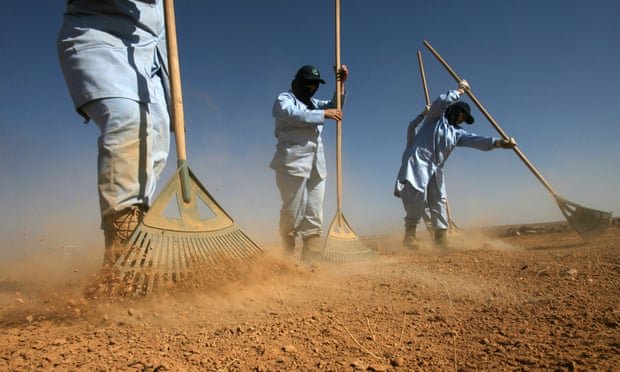The technological transformation of social enterprise
The minute I discovered social entrepreneurship, I knew I had found my calling. It happened unexpectedly, at a conference for young activists organised by Oxfam in Australia. As a young girl from rural Italy, I really had no knowledge of why someone would combine entrepreneurship with the social sector, but I was intrigued by the idea and the possibilities behind it. I decided to give it a go and, armed with €150 and a lot of enthusiasm, I launched Youth Action for Change, a peer-to-peer platform of free online courses for young people.
Ten years later, I am still here. I moved from free online courses to a citizen journalism platform to collect news from neglected conflicts, leveraging technology to make up for all of the shortages that I, as a young person, was encountering: money, credibility and infrastructure. What I lacked became the basis to build innovative products and platforms on and, quite surprisingly, this frugality helped to shape ideas and projects that proved successful in the pre-social networks era: 4,000 people trained in 130 countries, 15 projects started in post-conflict areas, more than 30 awards received for impact and innovation.
Yet, the field I came to love and choose – social entrepreneurship – was not particularly receptive or welcoming of the new model that I, along with countless others, was trying to develop around the world. To the eyes of most, technology could not provide real, tangible benefits to recipients and was, at most, something that was generally perceived as “cute” at best.
Things are now different from those days, with dozens of social networks to choose from, massive open online courses, apps and startups doing pretty much everything under the sun.
While technology is now an accepted and fundamental component of many socially-minded programs, and social enterprises are now highly professionalised, let us not forget a simple truth: technology can bridge many gaps, but it still cannot be a standalone feature in many places.
That is why I decided to try a different approach with the The Qessa Academy in Kabul, where technology would be minimal and the old would be gold. Qessa – which means stories in Dari – was started in 2013 with a view to preserving traditional storytelling, a practice that has dwindled due to the fact that culture and cultural expressions were challenged by the Russians first, and then almost forever silenced by the Taliban. In a country where 68% of the population is below the age of 25 and with an unemployment rate at 35%, it is easy to understand that groups with dubious purposes have no problems in recruiting people: a doctor in Kabul could earn around $60-80 per month, the Talibans pay up to $300.
Linking storytelling to local development, Qessa provides unemployed youth with a job, teaching them to leverage stories to pass on technical information on natural disasters mitigation, public health and food security. In a country with a literacy rate of just 28% – the sixth lowest in the world – words and stories can go a long way to spur change. But so can technology: to show a different side of Afghanistan, its people and its rich culture, Qessa also runs a small online platform that collects traditional stories from the Afghan diaspora, sending out videos, texts and audio files of the stories they grew up with.
It would be naive of us at Qessa to believe that stories can change the fate of a whole country. But what we believe is that stories can shape different ways of thinking and knowledge, allowing individuals to see reality in different ways. In the words of one of our students, Samim: “Stories allow me to better understand my culture and where I am coming from, but this is not the important thing. Stories teach me that I can stand up and voice my opinions, that I can have confidence in myself.” In a culture that is traditional about the role of young people in society, this is a big change.
In the case of Bibak, technology plays a bold role. Last summer I had the chance to work on this project, which develops sensors to aid landmine detection. It’s something that has been on my mind for years. Landmines are one of the most dreaded legacies of war – there are many millions of active landmines affecting the lives of 1.5 billion people.
Using off-shelf components and an Arduino microprocessor, my team and I are turning a commonly found water jerry can into a tool for landmine detection that includes a metal detector, a ground-penetrating radar and a sensor for vapours from explosives, to help find several types of landmine. What is unique here is that communities get trained to assemble and use the sensors to identify landmines present on their lands and, once demining is done, they can upcycle the technology to generate energy, improve local agriculture or access clean water. Bibak will present its work at Startup Bootcamp HighTech XL in Eindhoven in February, and will start a pilot in late 2015 in Afghanistan.
I guess that it would be straightforward to understand that, for me, technology proved to be a safe passage to creating change despite having limited resources and support. The reality, however, is more nuanced and, truth be told, my ideas have often been met with resistance by people preferring a safer, more traditional approach.
Love it or leave it, one thing is for sure: technology-enabled social entrepreneurship is here to stay. Get ready to join the movement.